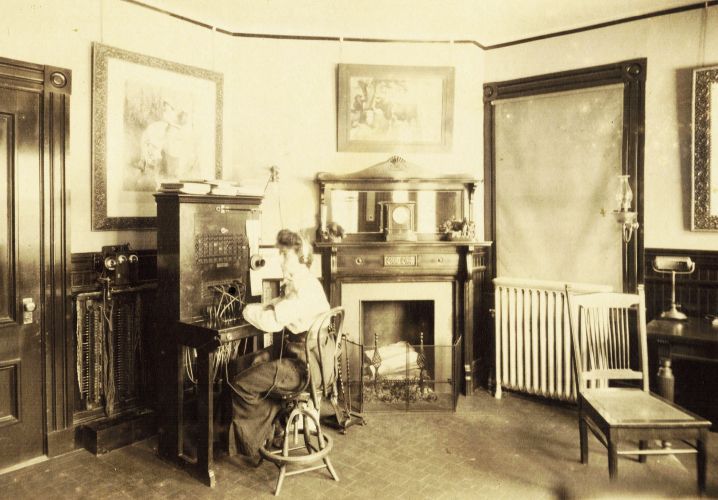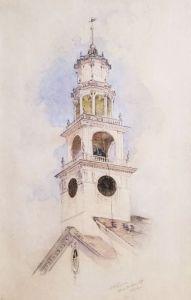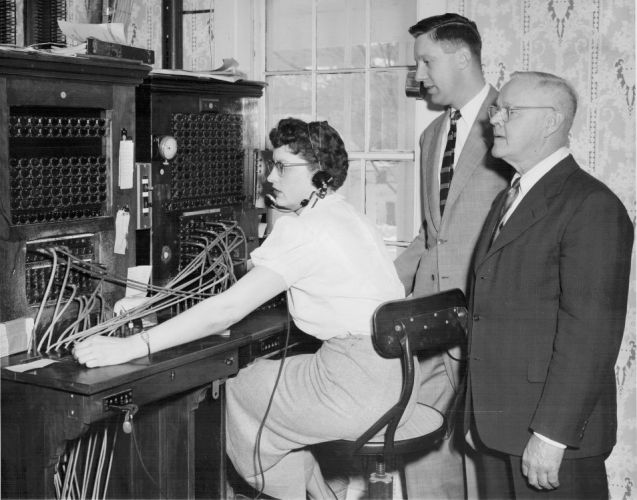New Boston Historical Society
New Boston, New Hampshire

Is that Mary Cann at the switchboard in the Creamery?
New Boston's Telephones
What is "dialing"?
What does it mean to "dial" a telephone, anyway? Telephones don't have dials any more; instead you take your iPhone or Galaxy out of your pocket and poke at a name in your contact list. When the first telephones came to New Boston, they didn't have dials either. You lifted an earpiece called a "receiver" off its hook switch and turned a crank to alert the telephone company's operator, who connected your call for you. Self-dialing wasn't introduced until 1956 — I'll include below dialing instructions from the 1956 telephone directory.
 Before telephones
Before telephonesBefore there were telephones, how did you call for help, when (for example) a raging fire threatened to burn all of New Boston village? What happened in May of 1887 was that two small girls, Lottie Adams and Marcy Dale, ran to the Church on the Hill and used their combined weight to pull on the rope that rang the big Revere bell, again and again. Everyone knew that a ringing bell meant trouble, so people came running to roll out the fire engine. Someone was dispatched to Goffstown on a fast horse to get help from their Fire Department, too — because there was no quicker way to communicate. (A telegraph arrived in town in 1893, with the railroad.)
The first telephones
New Boston's first telephones were installed in 1901. Initially there were 26 subscribers, including The Tavern and the Railroad Depot. The telephone exchange was located in the Creamery, where Fred Cann lived with his wife Mary. To make a phone call, you turned a crank on the telephone to ring the operator, and told her to whom you'd like to be connected. The railroad engineer Bill Fiske had a telephone in his home near the Town Hall, and his diary mentions frequent visits by neighbors who wanted to make a phone call.
When Willie Leland took over the telephone exchange in 1920, it was located in his house on High Street at the bottom of Valley View. Willie's four daughters helped run the switchboard for the next thirty-six years. The telephone operator knew where to find Doctor Fraser in event of an emergency, and she would give you a morning "wake-up" call if you liked.

Willie Leland watches the last call connected by an operator in 1956 before automation
An article in the February 1956 issue of the Community Bulletin informed New Boston residents: "On Thursday at 9 A.M. there will be a significant change. We shall simply dial all our local calls. After a time we'll get used to dialing our numbers and will probably like the fast, accurate service dial equipment provides. At the same time we shall miss the personal service of operators we know and like." To report a fire after March 1, 1956, you dialed 4-2626, which caused "special red phones to ring simultaneously in the homes of Robert Barss, Leslie Tower, Robert Bose and Robert Bezanson and in Kane's Drug Store and the Fire House." Someone would answer, and activate the fire siren.

"How to use dial telephones" from the 1956 directory
